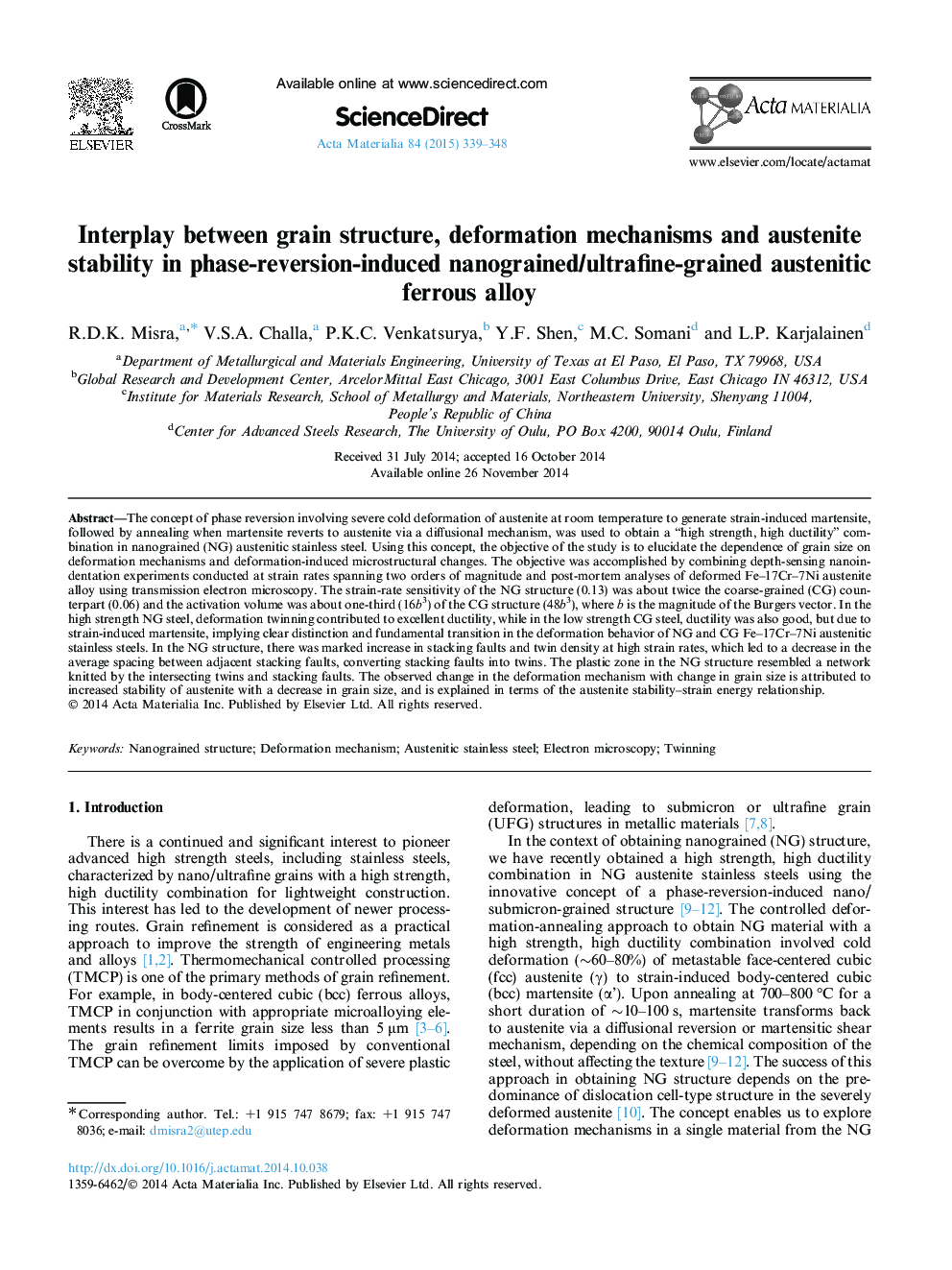| کد مقاله | کد نشریه | سال انتشار | مقاله انگلیسی | نسخه تمام متن |
|---|---|---|---|---|
| 1445441 | 1509592 | 2015 | 10 صفحه PDF | دانلود رایگان |
The concept of phase reversion involving severe cold deformation of austenite at room temperature to generate strain-induced martensite, followed by annealing when martensite reverts to austenite via a diffusional mechanism, was used to obtain a “high strength, high ductility” combination in nanograined (NG) austenitic stainless steel. Using this concept, the objective of the study is to elucidate the dependence of grain size on deformation mechanisms and deformation-induced microstructural changes. The objective was accomplished by combining depth-sensing nanoindentation experiments conducted at strain rates spanning two orders of magnitude and post-mortem analyses of deformed Fe–17Cr–7Ni austenite alloy using transmission electron microscopy. The strain-rate sensitivity of the NG structure (0.13) was about twice the coarse-grained (CG) counterpart (0.06) and the activation volume was about one-third (16b3) of the CG structure (48b3), where b is the magnitude of the Burgers vector. In the high strength NG steel, deformation twinning contributed to excellent ductility, while in the low strength CG steel, ductility was also good, but due to strain-induced martensite, implying clear distinction and fundamental transition in the deformation behavior of NG and CG Fe–17Cr–7Ni austenitic stainless steels. In the NG structure, there was marked increase in stacking faults and twin density at high strain rates, which led to a decrease in the average spacing between adjacent stacking faults, converting stacking faults into twins. The plastic zone in the NG structure resembled a network knitted by the intersecting twins and stacking faults. The observed change in the deformation mechanism with change in grain size is attributed to increased stability of austenite with a decrease in grain size, and is explained in terms of the austenite stability–strain energy relationship.
Journal: Acta Materialia - Volume 84, 1 February 2015, Pages 339–348
